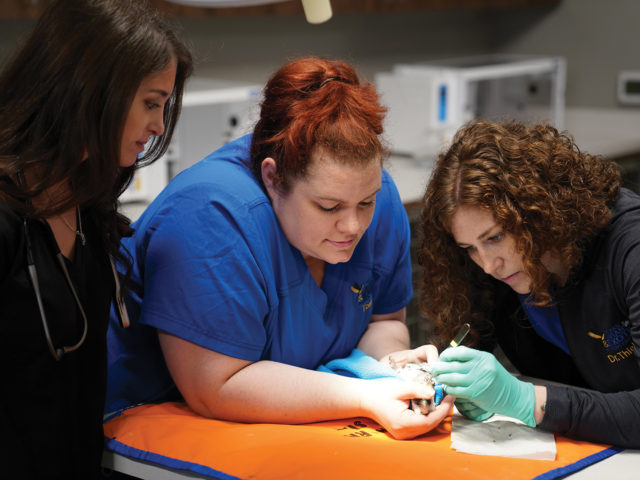
Technology in Preventing Medical Errors
In the dynamic landscape of healthcare, the integration of technology has emerged as a pivotal force in preventing medical errors. As the demand for precision and efficiency in medical practices continues to escalate, innovative technological solutions are playing an increasingly vital role in enhancing patient safety and reducing the occurrence of errors within healthcare systems.
Understanding the Gravity of Medical Errors
Medical errors can have profound consequences, ranging from patient harm to increased healthcare costs and legal ramifications. Recognizing the gravity of these errors has prompted a concerted effort to leverage technology to mitigate and prevent them. The application of advanced technologies is reshaping traditional healthcare practices, fostering a safer and more reliable environment for both patients and healthcare professionals.
Electronic Health Records (EHRs): A Cornerstone of Error Prevention
One of the key advancements in healthcare technology is the implementation of Electronic Health Records (EHRs). These digital records provide a comprehensive and centralized repository of a patient’s medical history, medications, allergies, and treatment plans. The accessibility of accurate and up-to-date information significantly reduces the likelihood of errors related to incorrect diagnoses, medications, or treatments.
EHRs not only streamline communication among healthcare providers but also enable real-time collaboration, ensuring that all members of the healthcare team are well-informed about a patient’s condition. This interconnected approach enhances care coordination and diminishes the chances of oversights that could lead to medical errors.
Artificial Intelligence (AI) and Machine Learning in Diagnosis
The advent of Artificial Intelligence (AI) and Machine Learning (ML) has ushered in a new era of diagnostic precision. These technologies excel in analyzing vast amounts of medical data, identifying patterns, and predicting potential health issues. AI-driven diagnostic tools can assist healthcare professionals in making more accurate and timely diagnoses, thereby reducing diagnostic errors.
Furthermore, machine learning algorithms can adapt and improve over time, learning from previous cases and continuously refining their diagnostic capabilities. This iterative learning process contributes to a higher standard of care, enhancing the overall accuracy and reliability of medical diagnoses.
Telemedicine: Bridging Gaps and Enhancing Accessibility
Telemedicine has become a cornerstone in modern healthcare, especially in the context of preventing medical errors. The ability to connect with healthcare professionals remotely has not only improved accessibility to medical services but has also played a significant role in reducing errors associated with delayed or inadequate care.
Through virtual consultations, patients can receive timely medical advice, reducing the risk of complications that may arise from delayed interventions. Additionally, telemedicine facilitates continuous monitoring of chronic conditions, enabling early detection of potential issues and preventing exacerbations that could lead to medical errors.
Wearable Technology and Patient Monitoring
The proliferation of wearable technology has empowered individuals to actively participate in their healthcare management. Wearable devices, such as smartwatches and fitness trackers, can monitor vital signs, and activity levels, and even detect irregularities in real time. By providing continuous data, these devices enable healthcare professionals to detect potential health issues early, preventing errors related to undetected deterioration of a patient’s condition.
Moreover, wearable technology promotes patient engagement and adherence to treatment plans. Patients who actively monitor their health are more likely to communicate effectively with their healthcare providers, fostering a collaborative approach to care that minimizes the risk of errors.

Cybersecurity: Safeguarding Patient Information
As technology becomes more integrated into healthcare, the importance of cybersecurity cannot be overstated. Protecting patient information from unauthorized access is critical to maintaining the integrity of healthcare systems and preventing errors related to data breaches.
Stringent cybersecurity measures, including encryption and multi-factor authentication, are essential in safeguarding Electronic Health Records and other sensitive information. By prioritizing cybersecurity, healthcare organizations can build trust with patients and ensure the confidentiality and accuracy of their medical data.
The Road Ahead: Continuous Innovation and Collaboration
The growing role of technology in preventing medical errors underscores the need for continuous innovation and collaboration within the healthcare industry. As technology evolves, so too must the strategies and tools implemented to enhance patient safety. Want to know your rights? Then check out their page to learn more.
In conclusion, the integration of technology in healthcare is not merely a trend but a necessity in the ongoing quest to minimize medical errors. From Electronic Health Records to Artificial Intelligence and telemedicine, each technological advancement contributes to creating a safer and more efficient healthcare ecosystem. Embracing these innovations is not just about keeping pace with the times; it’s about prioritizing patient safety and delivering the highest standard of care.

Group Therapy for Chronic Pain

CBD and Pain Management
You May Also Like

Myths About Indian Food
October 16, 2020
Direct Or Indirect Plumbing Systems
January 7, 2021
